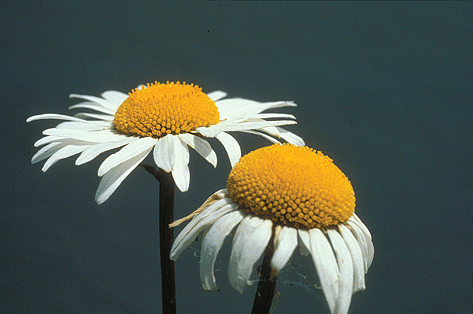Dig daisy rosettes out of gardens and lawns and pull as many thick roots called stolons as you can find.
Thick mats of ox eye daisy leaves.
Herbicide for wild daisies.
Clumps tend to become crowded over time which diminishes the flower show.
It thrives in direct sunlight and can tolerate high winds.
Daisies are perennials that usually bloom from early summer to the first frost.
Emergent vegetation leaves are thick narrow with one vein down its center and very light veins offshoot grayish green.
Highly floriferous and robust leucanthemum vulgare filigran ox eye daisy is a wonderful free flowering rhizomatous perennial valued for its abundant floral display and disease resistance.
The true black eyed susan is the closely related rudbeckia hirta which is also sometimes called the ox eye daisy.
Across 5 cm atop a lush mat of dark green basal leaves.
These flowers are always white have light colored centers and consist of silvery grey foliage making them quite noticeable.
In the fall look for the thick cluster of leaves located near the base of the plant.
Native range is colorado texas louisiana and florida.
Also called the ox eye daisy it consists of over 40 species and comes in colors that include white with gold centers.
The rudbeckias and echinaceas are both perennial members of the aster family which also includes chrysanthemums daisies sunflowers and of course true asters.
Though it is not of course a daisy.
Ox eye daisy typically grows 12 to 36 inches tall forming a clump that s 12 to 24 inches wide.
It produces a sea of large pure white single daisy flowers with golden yellow centers 2 in.
Sand dunes edges of salt and brackish marshes.
Similar to the sea ox eye daisy borrichia frutescens but the sea on eye daisy does not have serrated leaves and its leaves are usually opposite not alternating.
According to the california invasive plants council some species.
Once soil has fully warmed and before summer heat arrives mulch soil around white daisies with a 2 inch thick layer of organic mulch.
The ox eye daisy prefers the low fertility of old fields and pastures yet flourishes as a weed in many locations such as meadows people s lawns and vacant lots.
Leaf margins are smooth.
Dig down 6 to 8 inches.
It tends to prefer well drained soil and does not like shaded areas.
Though only at the base sometimes and its leaves are usually alternating whereas sea ox eye daisy has opposite leaves.
There are actually several different types of daisies including the shasta marguerite ox eye and painted daisy.
Wild daisies may have pretty blooms but the plants can be a pest if allowed to grow wild and spread.

